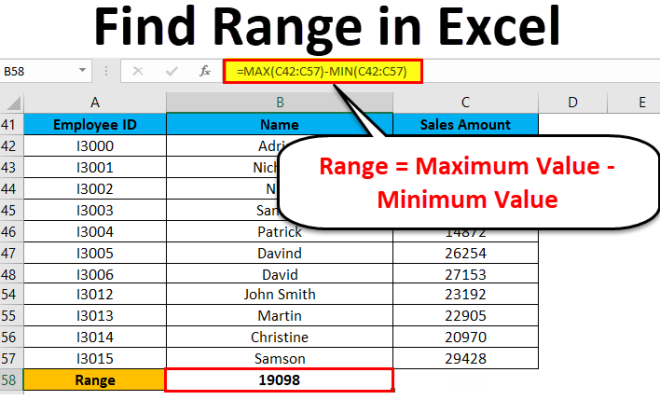Range Definition and Use in Excel Spreadsheets

Excel is a powerful tool that is used by millions of people around the world for a variety of tasks, including data analysis, financial planning, and project management. One of the key tools in Excel is a range, which is a group of cells that are selected to perform a specific function. In this article, we will explore the definition and use of ranges in Excel spreadsheets.
Definition of Ranges
Ranges are a group of cells that are selected to perform a specific function in an Excel spreadsheet. A range can be made up of a single cell or a group of contiguous cells. For example, if you wanted to add up the values in cells A1 to A5, you would highlight those cells to create a range.
Ranges can be selected using a variety of methods, including clicking and dragging the mouse to highlight the cells, pressing the Shift key and using the arrow keys to select the cells, or selecting the range by typing the cell references in the formula bar at the top of the screen.
Uses of Ranges
There are many uses of ranges in Excel spreadsheets, including:
1. Mathematical Functions: Ranges are commonly used in mathematical functions such as SUM, AVERAGE,
MAX, and MIN. These functions allow you to quickly and easily perform calculations on groups of cells.
2. Sorting and Filtering Data: Ranges can be used to sort and filter data in an Excel spreadsheet. For example, if you have a large data set that you would like to sort in alphabetical order, you could select the range of cells containing the data and then use the Sort function to order the data.
3. Chart Creation: Ranges are used to create charts in Excel spreadsheets. Charts can be used to visualize data and make it easier to understand. Ranges can be used to select the data that you want to include in the chart, and then the chart can be created using the built-in charting tools in Excel.
4. Conditional Formatting: Ranges are used in conditional formatting, which is a feature in Excel that allows you to automatically format cells based on their values. For example, you could use conditional formatting to highlight cells that contain values above or below a certain threshold.
Conclusion
Ranges are an essential tool in Excel spreadsheets, allowing users to perform a variety of tasks easily and efficiently. By understanding the definition and uses of ranges, you can become more effective at using Excel to analyze data, manage projects, and perform other tasks. Whether you are a beginner or an experienced Excel user, understanding ranges is critical to getting the most out of this powerful tool.




